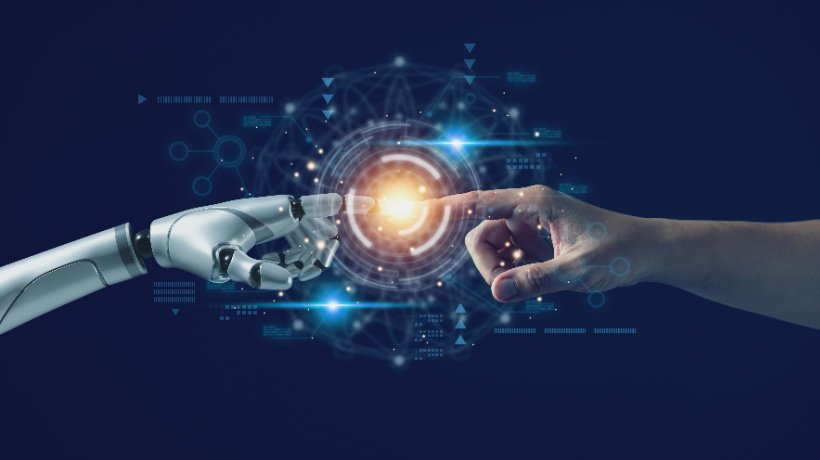Reasons Why AI Changes Your Relationship With LMS
Voltaire once said that the Holy Roman Empire was neither holy, nor Roman, nor an empire. We don't have to go quite as far in acknowledging the imbalance in the constituent parts of Learning Management Systems.
Sure, there’s a lot of management and system there, but often too little actual learning. And the learning that is there isn’t delivered when learners really need it, nor in the form they need it.
We need a new type of LMS for the way we want and need to learn today. With AI we have the potential to put learners at the center and at the same time have them better understand and manage their learning.
An AI-assisted LMS can bring the learning, management, and system into a more harmonious and effective alignment.
But My LMS Works Fine
Learning Management Systems tend to suit learning designers and managers, but don’t cut it for the actual learner. They are too removed, too unwieldy, even plain irrelevant.
Most Learning Management Systems are built around the requirements of the L&D professional, focusing on complex issues like onboarding, competency mapping, reporting, and learning plans.
These are all important features, but they’re a world away from the concerns of the modern learner who’s time-poor and knowledge-hungry. Learning Management Systems are top-down and often top heavy too. Navigation is poor and the learner interfaces aren’t intuitive.
But most Learning Management Systems just don’t put learning at the center or the learner in control.
Taking Account Of The Learner
We’ve known, since Ancient Greece, that learning is a 2-way process, a dialogue. With all the new technology and the advent of social media, learners expect quick, easy responses to their questions.
They want their learning to be personalized to meet their needs and to allow collaboration with others. They want to learn on the move on their mobile devices and be liberated from the classroom, but still have that face-to-face interaction that is the feature of a good class.
Making The LMS Invisible
There are 2 contrasting approaches to solving this dilemma; either make the platform more ‘social’ by introducing more features that mimic social media, or make learning more relevant and accessible by moving the LMS out of the way.
Learning Pool is committed to the latter approach where the LMS becomes ‘invisible’, while learners have direct access to and control over the information and learning stored in the LMS. And they do that without dealing with complex interfaces or the need to sign up for a course.
Direct Access To Content
We can identify 3 key features which move the LMS out of the way:
- Deep links mean allowing learners direct access to learning when they need it. This can be as simple as setting up a web link or a QR code that brings the learner straight to a particular piece of training or information. Imagine an engineer out on a call who’s facing a particularly unusual problem. She doesn’t see this type of issue or a daily basis, so is unlikely to have all the details of the solution in her head. She needs a piece of training and she needs it now. A QR code for the equipment she’s trying to fix, scanned by her smartphone takes her to the solution, and she rectifies the problem.
- Web services provide another way of organizing and making accessible learning for a particular time and context. A customer service portal provides information in a specific context, relevant to that particular job role and means that an employee on a call can access the information he needs directly through the portal without trawling the entire LMS. And the portal will have resources (targeted chunks of information), not whole training courses or presentations that are of limited use on the job.
- Finally, using a single-sign-on removes the barrier and allows that direct access to the LMS’s resources. It integrates the LMS into, rather than removes or isolates it from, the workflow.
Major organizations are already on the case. As Josh Bersin notes ‘Companies like IBM, Sears, and Visa are starting to turn off their old systems and build a new generation of learning infrastructure that looks more like a “learning network” and less like a single integrated platform’ [1].
AI Can Take You Further
Removing barriers and making the LMS invisible is just the first step. They clear the path to the learning. But they do not make learning more accessible or relevant to the learner. For that, we need the latest developments in Artificial Intelligence.
Take chatbots, for example. These AI-assisted computer programs can respond to queries in a way a simple search cannot. Chatbots are not passive sources of information, but active assistants. They respond to natural language requests, provide answers, and learn from doing so. Building on the data they acquire about your requests, they can make suggestions, tailor information to your needs, and mimic the instructor in training. In certain support roles, they’re answering common customer requests, freeing up human agents to deal with more complex issues.
AI doesn’t just enhance the LMS, it makes it truly responsive to learners’ needs: a system that adapts intelligently to learners’ requests and allows them to take control of their own learning.
LMS: The Future
The LMS is not dead. It's still a £4bn sector. But it needs to adapt to survive and put the 'L' truly first while moving the 'M' and 'S' to the background.
This means creating a system that’s truly social and empowering for learners: taking it’s lead from social media, enabling collaboration and peer-to-peer learning, including informal learning that we acquire and access outside of the LMS and outside of work.
There’s also huge potential for learning systems in the deployment of xAPI. Using xAPI tracking linked to a Learning Record Store (LRS) means you can record off-site, incidental, and informal learning that’s external to the LMS. And an LRS can become a component of a revitalized LMS.
In a Learning Record Store, information on learners is organized and stored as competency statements. This allows the development of real personalization of learning linked to an individual’s competency and skill. AI can help in mining and in analyzing data to make learning more relevant and accessible.
So, reports of the demise of the LMS may be premature, but to stay alive it needs to be reinvigorated by clever use of intelligent technology to put learning first.
References:









